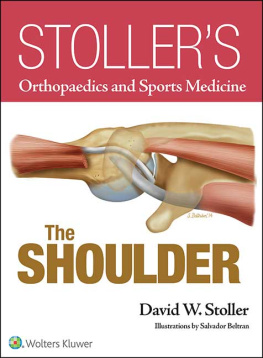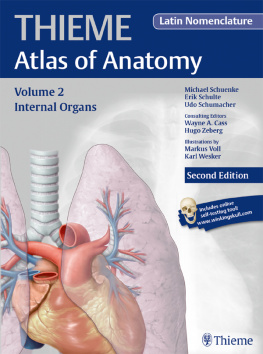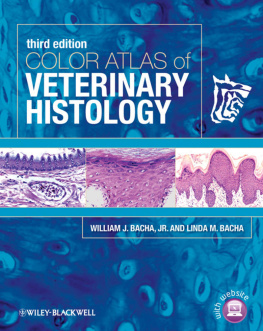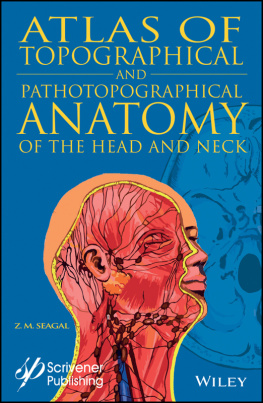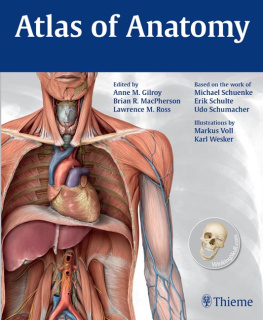COLOR ATLAS OF VETERINARY ANATOMY
THE DOG & CAT
Second Edition
Stanley H. Done, BA BVetMed PhD DECPHM DECVP FRCVS FRCPath
Visiting Professor of Veterinary Pathology, University of Glasgow Veterinary School
Former Lecturer in Veterinary Anatomy, Royal Veterinary College, London
The late
Peter C. Goody, MSC (Ed) PhD
Former Lecturer in Veterinary Anatomy, Royal Veterinary College, London
Neil C. Stickland, BSc PhD DSc
Professor of Veterinary Anatomy, Department of Veterinary Basic Sciences, Royal Veterinary College, London
Susan A. Evans, MIScT AIMI MIAS
Former Chief Technician in Anatomy, Department of Veterinary Basic Sciences, Royal Veterinary College, London
With radiographs provided by
Elizabeth A. Baines, MA VetMB DVR DipECVDI MRCVS
Lecturer in Veterinary Radiology, Department of Veterinary Clinical Sciences, Royal Veterinary College, London
Elsevier Inc.
DEDICATION
This volume is dedicated to the late Peter Goody
Copyright
MOSBY ELSEVIER
Times Mirror International Publishers Limited 1996
Mosby International Limited 2000
2002, Elsevier Science Limited.
2009, Elsevier Limited. All rights reserved.
.
First edition 1996
Second edition 2009
ISBN 9780-7234-3415-3
British Library Cataloguing in Publication Data
A catalogue record for this book is available from the British Library
Library of Congress Cataloging in Publication Data
A catalog record for this book is available from the Library of Congress
Notice
Neither the Publisher nor the Authors assume any responsibility for any loss or injury and/or damage to persons or property arising out of or related to any use of the material contained in this book. It is the responsibility of the treating practitioner, relying on independent expertise and knowledge of the patient, to determine the best treatment and method of application for the patient.
The Publisher
Printed in China
For Elsevier
Commissioning Editor: Robert Edwards
Development Editor: Lynn Watt
Project Manager: Nancy Arnott
Designer/Design Direction: George Ajayi
Illustration Manager: Merlyn Harvey
Illustrators: Jane Catherall, Samantha Elmhurst, Jenni Miller, Maurice Murphy, Lynda R Payne, Lee Smith, Marion Tasker
PREFACE
This third volume in the series, like the first two on the ruminant and horse, is primarily intended for veterinary students and practising veterinary surgeons. Nevertheless, we confidently expect it to appeal to a wider audience including dog and cat enthusiasts, research workers, comparative anatomists, premedical students, in fact anyone with a desire to appreciate the topographical anatomy of the domestic carnivores.
The book presents the important features of regional and topographical anatomy in a series of full-color photographs of detailed dissections. These structures are identified in accompanying colored and extensively labelled drawings. The nomenclature is based on that of the Nomina Anatomica Veterinaria (1983) with the Latin terminology used for muscles, arteries, veins, lymphatics, and nerves, but the terminology anglicised for most other structures. Captions for the photographs give additional information necessary for their interpretation, such as those structures removed or displaced to obtain the picture.
A criticism levelled at using embalmed cadavers for dissection is that they lack realism, normal color and form, and often bear little resemblance to organs in their natural state. This criticism indeed has some validity if one is actually doing the dissecting embalmed material does not have the feel of fresh material having lost its elasticity and pliability. However, if one is considering the topographical relationships between structures and their relative positions then much of the criticism disappears, since the embalmed cadaver is arguably better at displaying such relationships. Photographs of such embalmed specimens are also clearer and more readily interpreted than photographs of fresh material. Consequently photography of embalmed latex injected specimens was preferred in our attempts to impart an initial appreciation of regional and topographical anatomy.
The dissections and photographs have been specially prepared for this book, except for a few photographs of specimens in the Anatomy Museum collection of the Department of Veterinary Basic Sciences, The Royal Veterinary College London. The radiographs were prepared originally for teaching purposes and correspond in large measure to radiographs that practising veterinary surgeons would routinely be interpreting.
Three dogs, two bitches and two cats were dissected for this work. It was not the object of the book to consider intraspecific variation and so breed differences have been ignored in the dissections. Each animal was dissected completely through a progressive series of dissections. We therefore encountered similar problems to those facing a veterinary student dissecting the same cadaver over a period of some months with consequent deterioration.
The specimens were embalmed using methods routinely employed in the Department of Veterinary Basic Sciences at The Royal Veterinary College. Their blood vessels were subsequently injected with colored neoprene latex and they were stored in formalin (7%).
The aim of the dissections is to display the topography of the animal to, among others, the veterinary student and surgeon. Unlike the ox and horse, however, a routine clinical examination of the dog or cat is not restricted to a lateral approach with the animal in the standing position. Thus, while lateral views predominate to correspond and make comparison with the horse and ox, they are supplemented by numerous dissections from a ventral approach. Also, as with the ox and horse, we have as far as possible avoided photographs of parts removed from the body, or the use of views from unusual angles or of unusual bodily positions.
This volume differs from the first two volumes in several ways. The general introductory chapter and the inclusion of radiographs was not a feature of the earlier volumes. Radiography of the ox and horse, apart from the practical problems of obtaining good radiographs, is also of restricted value in providing topographical information. In the smaller domestic animals it is obviously easier to accomplish and provides much useful information to supplement dissections. Secondly, an additional chapter is devoted specifically to the vertebral column with special emphasis on the disposition of the epaxial musculature. Thirdly, transverse sections through the various regions are used to assist in the interpretation of three-dimensional topography, as in modern imaging methods.
A significant difference between this edition of the volume and previous editions is the addition of new radiographs, CT and MRI scans which are placed throughout the book in appropriate chapters. A second major difference is the inclusion of clinical notes at the beginning of each main chapter. These notes highlight the areas of anatomy which are of particular clinical significance. Finally, over 60 self-assessment questions are available online with this new edition to help test learning. We feel that these additions to the book add considerably to its usefulness especially to the aspiring veterinary surgeon.
ACKNOWLEDGMENTS
Since the first edition our colleague Peter Goody has died. He was our friend, colleague and co-worker. He was a meticulous anatomist and considerable artist and his contribution to this revised edition has been greatly missed. It is therefore our pleasure to dedicate this edition to his memory and to make him first author. Without his efforts the first edition of the dog volume would never have been undertaken.
Next page

